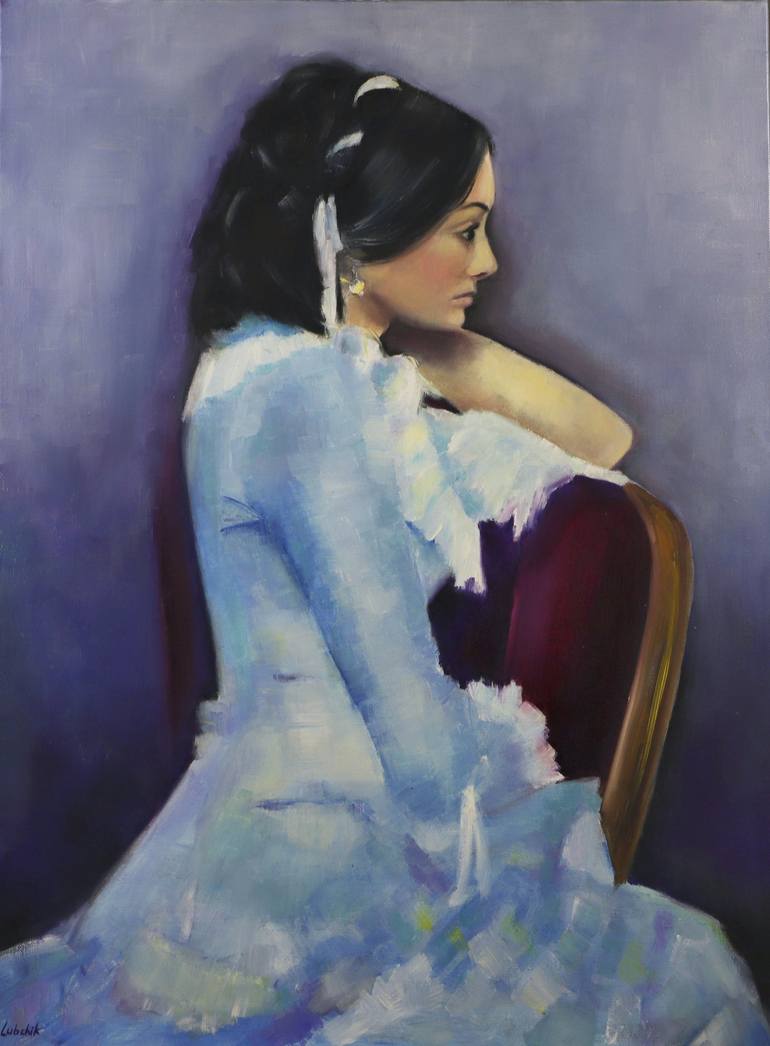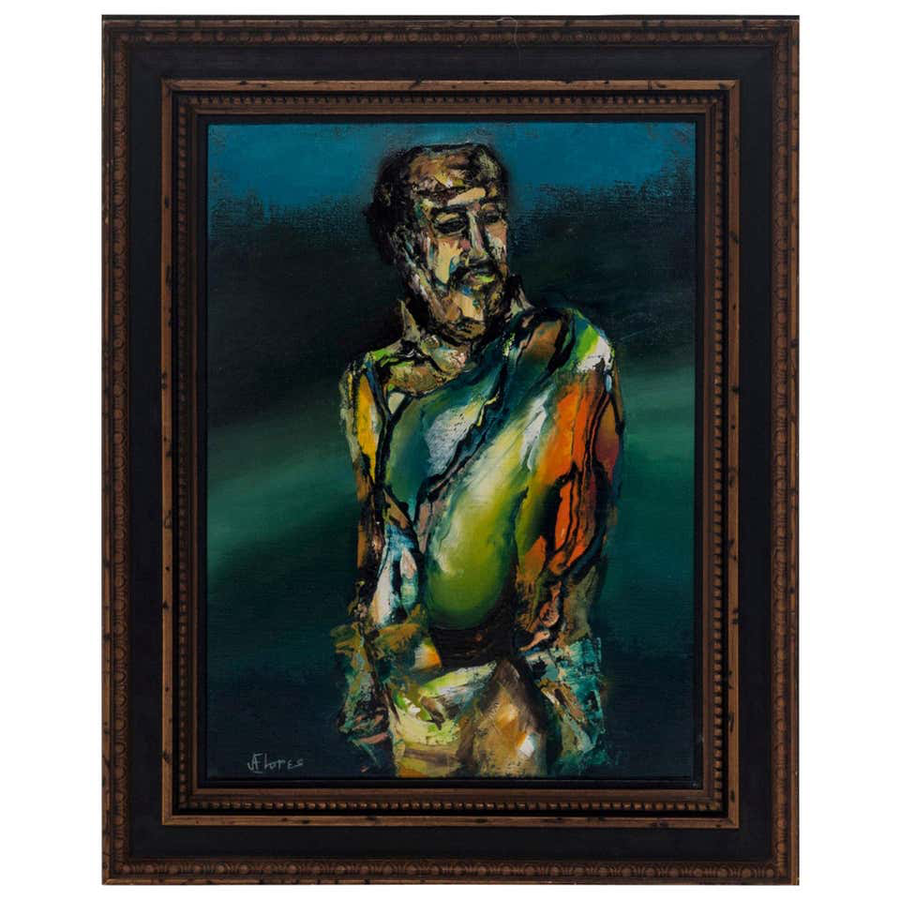The Impact of Figurative Oil Painting on Modern Art and Culture
The Impact of Figurative Oil Painting on Modern Art and Culture
Blog Article
The Advancement of Metaphorical Oil Paint: Comprehending Its Historical Significance and Modern Interpretations
The development of figurative oil paint works as a compelling lens through which to examine the interplay between imaginative expression and historical context. From the meticulous naturalism of the Renaissance to the stirring power of the Baroque, each era has actually added layers of significance and technique to this ageless medium. Contemporary artists, drawing from this rich heritage, are currently reinterpreting the human number in methods that challenge conventional stories. As we discover these makeovers, one have to think about how the dialogue between previous and existing informs not just creative practice yet also societal representations in a significantly intricate globe.
Beginnings of Figurative Oil Painting
The beginnings of metaphorical oil painting can be mapped back to the very early Renaissance in Europe, especially in the 15th century. This duration noted a substantial departure from the flat representations and inflexible types characteristic of medieval art. Artists began to check out naturalism, emphasizing the human number and its emotional expression. The development of oil paint enabled better deepness of color and information, enhancing the realistic look and vibrancy of their job.

In this transformative era, numbers were typically portrayed within contextually abundant settings, showcasing not just their physical features yet additionally their mental states. Pioneers such as Jan van Eyck and Titian used the medium's versatility, using layering methods to accomplish brightness and texture. This technology helped with the portrayal of intricate materials and the nuances of complexion, adding to the development of portrait and narrative scenes.
Additionally, the Renaissance focus on humanism promoted a gratitude for uniqueness, which in turn affected musicians to create even more vibrant and relatable figures - figurative oil painting. As an outcome, figurative oil painting became a powerful car for narration and psychological engagement, laying the foundation for future artistic motions and designs
Secret Historic Activities
Substantial historic motions have formed the evolution of figurative oil paint, each contributing one-of-a-kind philosophies and methods that broadened the tool's opportunities. The Renaissance marked a turning point, highlighting realistic look and the human type, with artists like Leonardo da Vinci and Michelangelo pushing the borders of physiological accuracy and perspective. Following this, the Baroque age brought significant contrasts of light and shadow, exemplified by Caravaggio, that infused religious themes with extreme emotionality.
The 19th century introduced Romanticism and Realism, where musicians such as Delacroix and Courbet challenged timeless perfects, concentrating on private expression and daily life. The development of Impressionism even more reinvented the medium by highlighting the effects of light and color, resulting in a departure from conventional representation.
In the early 20th century, movements like Expressionism and Cubism redefined metaphorical paint via abstraction and the expedition of emotional deepness. Each of these activities not just mirrored the societal modifications of their times but likewise laid the foundation for contemporary analyses. The interplay between these historic activities has actually developed an abundant tapestry of viewpoints and styles, influencing contemporary musicians in their quest of capturing the human experience on canvas.
Methods and Materials Advancement

Throughout the Baroque duration, strategies such as chiaroscuro and sfumato arised, enhancing the psychological vibration of figurative compositions. Artists began to experiment with glazes and impasto, manipulating texture and brightness. By the 19th century, technologies like the usage of pre-mixed paints in tubes revolutionized availability, enabling artists to paint you can check here en plein air and record the fleeting effects of light.
The 20th century witnessed the intro of artificial pigments and tools, which broadened the palette and modified the consistency of oil paints. The exploration of brand-new application strategies, such as scheme blades and brushes of differing rigidity, more varied artistic expression. Collectively, these improvements show the evolving connection in between products, techniques, and the creative vision intrinsic in figurative oil paint.

Contemporary Interpretations
Contemporary interpretations of metaphorical oil paint reflect a dynamic discussion between practice and development, where artists challenge established norms and check out diverse styles. This evolution materializes in numerous ways, as contemporary musicians blend classical techniques with contemporary concepts, often attending to social, political, and individual narratives.
Lots of practitioners draw motivation from historical works, yet they infuse their pieces with modern viewpoints, using the human kind as a vehicle for discourse on sex, society, and identity. Artists increasingly trying out abstraction, distortion, and multimedias, which permits a broader analysis of the figure and its context.
Additionally, the usage of vivid color combinations and unique structures commonly offers to interrupt standard watching experiences, prompting crucial involvement from target markets. This change in focus extends beyond visual appeals; it reflects an expanding awareness of the complexities of human experience internet in an interconnected globe.
As figurative oil painting remains to progress, it remains an essential medium for discovering the nuances of contemporary life, personifying both a respect for heritage and a commitment to dynamic thought. The result is an abundant tapestry of expression that reverberates with the complexities of the contemporary human problem.
Influence on Modern Art
The influence of metaphorical oil paint on modern-day art is extensive, as it has actually continually inspired a myriad of creative motions and methods throughout the 20th and 21st centuries. From Expressionism to Surrealism and beyond, the exploration of the human number has actually continued to be a main motif, enabling artists to communicate complex emotions and stories. This focus on figurative representation has led to a re-examination of conventional techniques, causing ingenious approaches that blend realism with abstraction.
In addition, modern artists have welcomed metaphorical oil painting as a method to resolve political and social problems, utilizing the medium to test understandings of society, identification, and sex. The resurgence of passion in metaphorical operate in current years shows a longing for connection in a progressively electronic world, where human experience and emotion are extremely important.
Additionally, the dialogue between figurative oil painting and contemporary art appears in the works of artists such as Kehinde Wiley and Jenny Saville, who make use of historic recommendations while instilling their items with modern significance. Eventually, figurative oil paint continues to shape and redefine modern artistic expression, underscoring its long-lasting relevance in the art world.
Conclusion
The advancement of metaphorical oil painting emphasizes read review its historical relevance and adaptability throughout various imaginative activities. Eventually, figurative oil paint continues to be a crucial tool for exploring the human experience, reverberating profoundly in today's digital landscape.
The development of metaphorical oil painting serves as a compelling lens via which to examine the interplay between artistic expression and historic context.Substantial historic motions have formed the evolution of figurative oil painting, each contributing distinct approaches and methods that broadened the tool's possibilities.As historic activities formed the trajectory of figurative oil painting, the strategies and materials used by artists have actually also undertaken substantial transformations. figurative oil painting.The influence of metaphorical oil painting on modern-day art is extensive, as it has actually continuously inspired a myriad of imaginative motions and methods throughout the 21st and 20th centuries.The development of figurative oil paint underscores its historic significance and versatility across various imaginative movements
Report this page